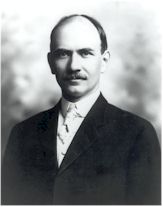Dugald Caleb Jackson | |
|---|---|
 | |
| Born | (1865-02-13)February 13, 1865 Kennett Square, Pennsylvania, U.S. |
| Died | July 1, 1951(1951-07-01) (aged 86) |
| Alma mater | Penn State University |
| Awards | IEEE Edison Medal (1938) |
| Scientific career | |
| Fields | Electrical engineering |
| Doctoral students | Vannevar Bush |
Dugald Caleb Jackson (February 13, 1865 – July 1, 1951) was an American electrical engineer. He received the IEEE Edison Medal for "outstanding and inspiring leadership in engineering education and in the field of generation and distribution of electric power".